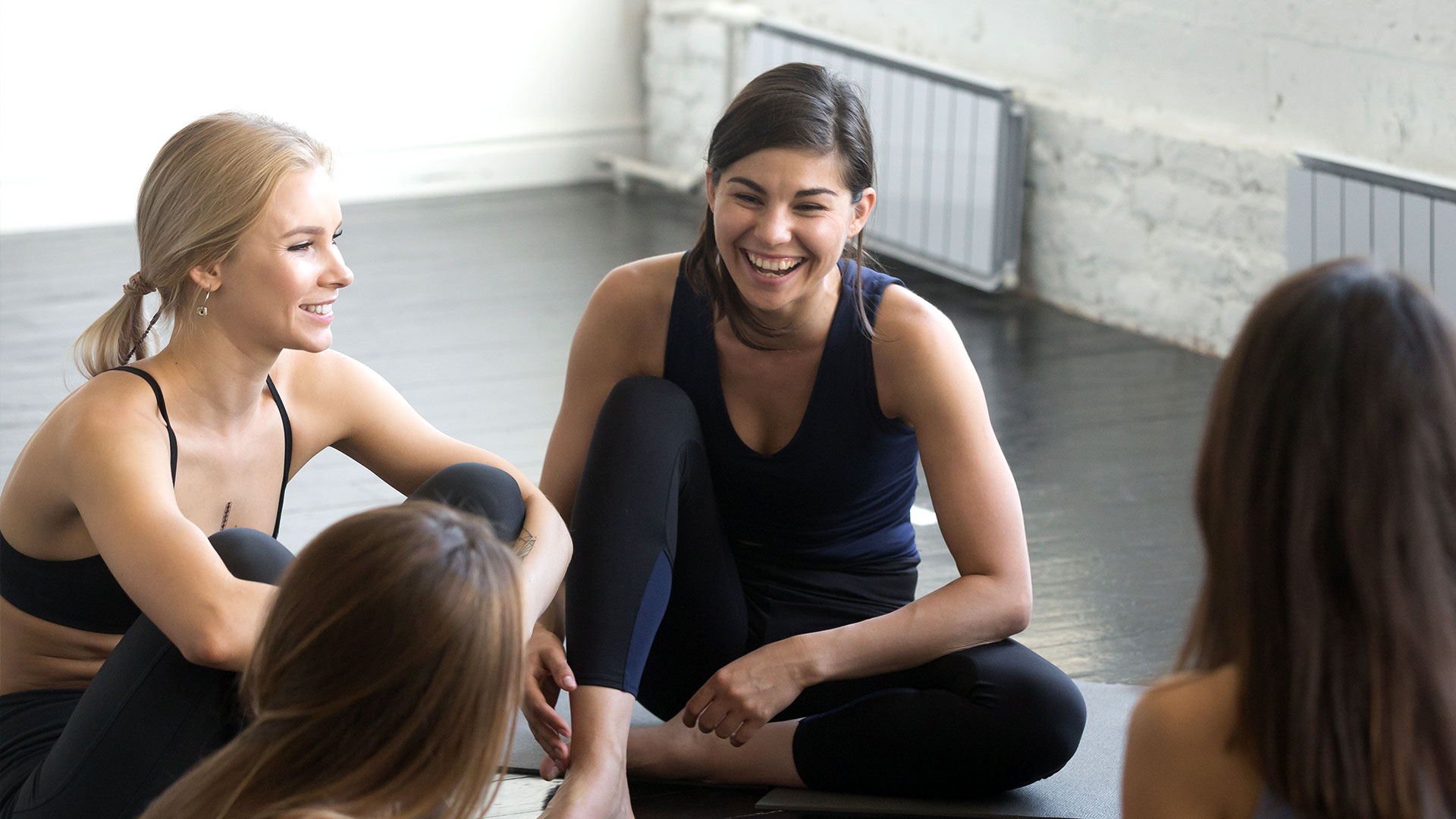If you are interested in pursuing a career as a dance teacher, this is the ultimate guide. Below, we unpack strategies for building a fulfilling career in the field, and take a look at everything from essential dance teacher qualifications to securing a coveted position and how to use effective networking and a compelling portfolio to grow your business.
What does it mean to be a Dance Teacher?
A dance teacher serves as a mentor, guide, and inspiration to budding dancers. Their primary responsibility revolves around teaching dance while fostering appreciation and passion for movement and rhythm among students. Beyond imparting technical skills, a dance teacher encourages dedication and inspiration, shaping the next generation of dancers.
The job of a dance instructor is multifaceted. It’s not solely about choreography and counting steps, it’s also about instilling confidence, discipline, and a love for the art form. A good dance teacher should have the ability to teach and nurture skills in others. A dance teacher’s role also extends beyond the confines of a studio as they become mentors who nurture creativity and self-expression.
Essentially, a dance teacher’s impact extends far beyond the steps they teach. They shape futures, build confidence, and nurture a lifelong love for dance in their students, leaving a mark that will last a lifetime.
If you are interested in building a career as a dance teacher, it is vital to understand the skills and responsibilities associated with this field.
Dance Teacher skills and responsibilities
So, what makes up a dance teacher’s role?
-
Effective communication skills:
Clear and precise communication is important if you want to build a long lasting and successful career. The ability to articulate instructions and concepts ensures that students understand and execute dance techniques accurately. This skill involves using language that resonates with students of varying skill levels, ages and backgrounds.
-
Choreography expertise:
A dance teacher must possess a strong grasp of choreography, creating routines that are both technically sound and expressive. A good dance teacher has the ability to create sequences that challenge students while at the same time, allowing them to explore their creativity. This skill involves blending technicality with storytelling, ensuring each dance captivates and entertains audiences and dancers alike.
-
Creating a nurturing environment:
Nurturing a positive and supportive learning environment is vital. Dance teachers should create spaces where students feel encouraged to take risks and explore their potential. Establishing an atmosphere of respect, collaboration, and encouragement enables students to thrive and develop both technically and artistically.
-
Adaptability in teaching methods:
A professional dance teacher tailors their teaching methods to accommodate diverse learning styles, ages, and abilities. Being flexible in approach ensures that each student receives personalised guidance, maximising their learning experience. Adjusting teaching techniques to suit individual needs fosters an inclusive and effective learning environment.
-
Passion and dedication to dance:
A sincere passion for dance is the core of a dance teacher’s role. This enthusiasm fuels inspiration and motivates students to pursue their passion. A dance teacher’s dedication should go beyond teaching steps; it’s a commitment to nurturing a lifelong love for dance.
Each of these skills and responsibilities contributes significantly to a dance teacher’s effectiveness in guiding and inspiring students on their dance journey.
How to become a Dance Teacher
Embarking on the path to become a dance teacher requires dedication, a structured approach to education, practical experience, and of course, a well-rounded portfolio.
-
Education pathway:
Begin by pursuing formal education in dance or a related field. Enrolling in accredited programs lays a strong foundation for success. These courses or programs take a closer look at dance theory, history, choreography, and teaching methodologies, helping aspiring dance teachers understand what it takes to hold professional classes.
-
Certifications and specialised training:
Acquiring certifications from esteemed institutions like The Royal Academy of Dance (RAD) and Imperial Society of Teachers of Dancing (ISTD) is incredibly beneficial. These certifications validate expertise and adherence to industry standards.
-
Practical experience and apprenticeships:
Gain hands-on experience by engaging in apprenticeships or assisting established dance teachers. Observing classroom dynamics, refining teaching techniques, and understanding diverse student needs contribute significantly to a teacher’s skill set.
-
Building a dance portfolio:
Put together a diverse dance portfolio that showcases proficiency in various styles, choreography, and teaching capabilities. Documenting teaching experiences, performances, and any additional training highlights versatility and builds trust.
-
Continued professional development:
As stated previously, it is important to embrace continuous learning through workshops, seminars, and professional associations. Joining organisations like the Council for Dance Education and Training (CDET) or the National Dance Teachers Association (NDTA) offers access to resources, networking, and support for ongoing development.
-
Networking and job search:
Make sure to network within the dance community, attend events, and seek mentorship opportunities. Networking aids in establishing connections and exploring potential job opportunities within studios, schools, or community centres.
By following this structured pathway and by balancing education, certifications, practical experience, portfolio development, and ongoing growth, individuals are able to lay a solid career foundation.
Qualifications for being a Dance Teacher in the UK
Becoming a proficient dance teacher in the UK entails a blend of formal education, specialised certifications, and ongoing professional development. While there isn’t one defined path, certain qualifications can significantly enhance career prospects in this field.
-
Formal education:
Pursuing a degree in dance or a related field from accredited institutions lays a strong foundation. Programs like Bachelor of Arts (BA) in Dance or Dance Education provide comprehensive knowledge in dance history, technique, choreography, and more. These programs equip aspiring teachers with a solid theoretical base and practical teaching experience.
-
Certifications:
Acquiring certifications from reputable organisations adds credibility. The Royal Academy of Dance (RAD) and Imperial Society of Teachers of Dancing (ISTD) offer certification programs tailored for aspiring dance teachers. Achieving RAD’s Teaching Certificate or ISTD’s Level 4 Certificate in Dance Education showcases proficiency and adherence to industry standards – building trust.
-
Additional training and workshops:
Supplementing formal education with additional training and workshops is also highly beneficial to career longevity. Continuing professional development through workshops, seminars, and masterclasses keeps dance teachers updated with evolving teaching methodologies, new styles, and industry trends.
-
Teaching experience and apprenticeships:
Gaining practical teaching experience is invaluable. Engaging in apprenticeships or assisting established dance teachers allows aspiring instructors to observe classroom dynamics, refine teaching techniques, and gain hands-on experience in managing student needs.
-
Professional organisations and memberships:
Joining professional associations like the Council for Dance Education and Training (CDET) or the National Dance Teachers Association (NDTA) provides access to resources, networking opportunities, and support for professional growth.
Navigating the path to becoming a dance teacher involves a combination of academic qualifications, certifications, practical experience, and continuous professional development. Building a foundation through education and training equips aspiring dance teachers with the necessary tools to excel.
Alternative routes to becoming a Dance Teacher
Beyond traditional academic routes there are alternative paths that offer diverse avenues for aspiring dance instructors.
-
Apprenticeships and mentorship:
Engaging in apprenticeships under seasoned instructors or partaking in mentorship programs provides hands-on experience, allowing individuals to learn teaching methodologies and classroom management firsthand.
-
Community involvement and volunteer work:
Active participation in community dance programs, volunteering at local studios, or leading dance workshops can foster practical teaching experiences and cultivate a strong understanding of diverse student needs.
Exploring these alternative routes offers unique opportunities to gain invaluable teaching skills and hands-on experience outside formal education which compliments a well-rounded journey toward becoming a proficient dance teacher.
Securing a job as a Dance Teacher
Entering the field of dance instruction requires strategic job search tactics and a well-prepared approach to stand out in a competitive market.
-
Networking and connections:
Leverage networking within the dance community by attending events, workshops, and seminars. Establishing connections with fellow dancers, instructors, and studio owners can uncover job opportunities and provide valuable insights into the industry.
-
Effective job search strategies:
Make use of online job boards and professional associations in order to explore openings in studios, schools, or community centres. Tailor applications to highlight relevant education, certifications, and teaching experiences that align with the job requirements.
-
Crafting a compelling resume and portfolio:
Prepare a polished resume that emphasises qualifications, certifications, teaching experience, and any specialised training. A concise, well-organised resume that highlights dance teacher qualifications and teaching skills will capture the attention of potential employers. Make sure to also develop a comprehensive dance portfolio that showcases diverse styles, choreography, and teaching abilities. Include videos, choreographic works, certifications, and testimonials that showcase expertise and passion for dance instruction.
-
Showcasing teaching capabilities:
During interviews or auditions, demonstrate effective teaching techniques, communication skills, and passion for dance education. Presenting lesson plans or conducting sample classes can exhibit teaching skill and creativity which leaves a lasting impression on potential employers.
In conclusion
Embarking on a fulfilling career as a dance teacher involves a blend of education, practical experience, and continuous growth. Whether pursuing formal education, gaining certifications, or exploring alternative paths, the journey promises rewards.
As you take on this path it is important to use technology to further your career and manage your business goals. Gymcatch offers dance teachers seamless tools to organise classes, manage schedules, and handle payments efficiently. It streamlines administrative tasks, empowering instructors to focus on what they love. Contact us today.

Ollie founded Gymcatch in 2015 with the aim of making participation in fitness easier for all. As founder, Ollie served as CEO since Gymcatch’s inception. He’s currently focused on growing the platform through strategic partnerships, corporate development and growing the team. Prior to founding Gymcatch, Ollie spent 10 years at Barclays, latterly as a Director covering the TMT sector. He gained an MBA with Honours from the University of Chicago in 2013 and higher class honours in Philosophy and International Relations from the University of Bristol. Outside of the office, Ollie enjoys travelling, playing and watching cricket and spending time with his young family. He supports a number of charities focused on increasing physical participation.



